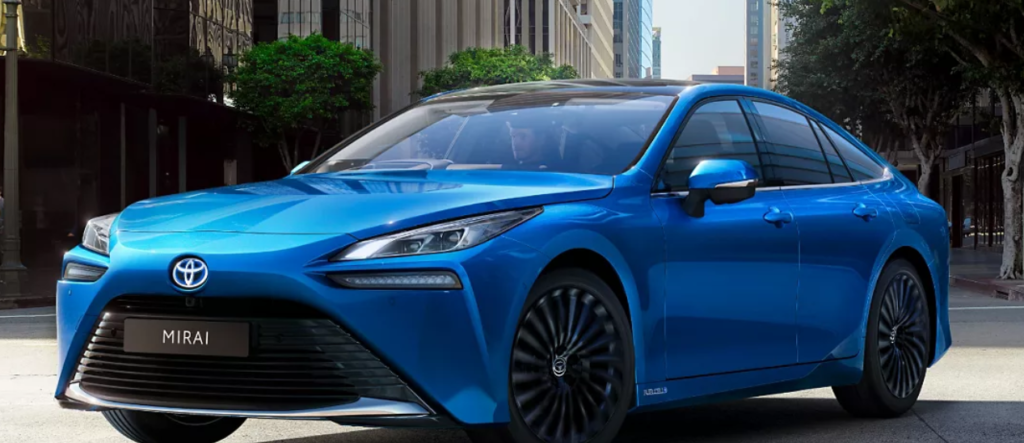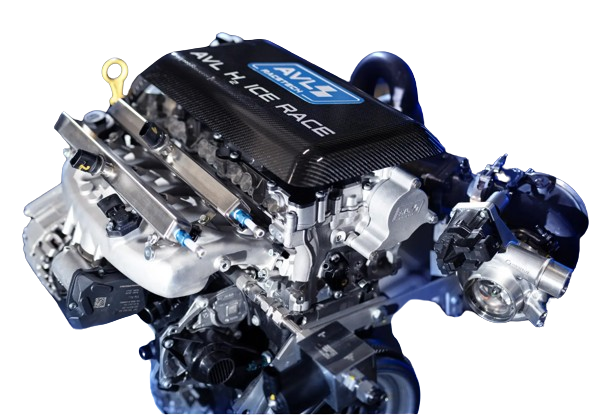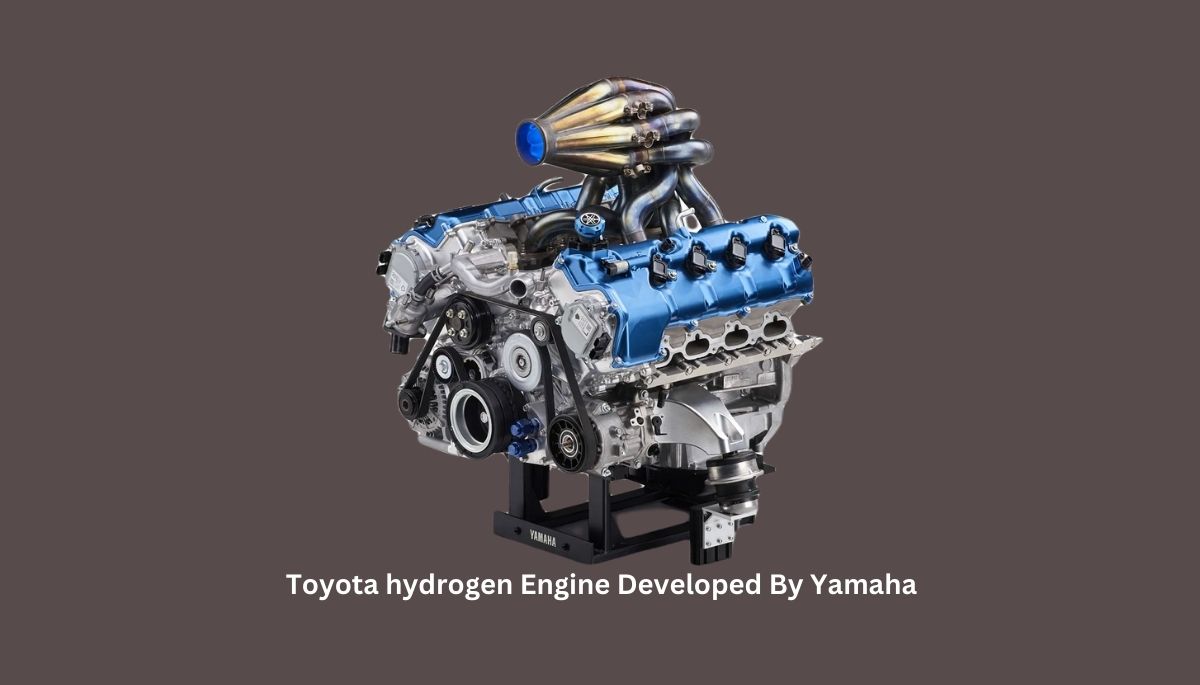Toyota is in the process of developing new water engine technology that has the potential to completely decimate the electric car industry by unifying the strengths of hydrogen engines and EV while cancelling their weaknesses out. Water Engine can produces as much power as a petrol or electric engine. Let’s be clear, Toyota are no strangers to the EV world and have always been an innovator – with the Toyota Prius being the worlds first hybrid electric car and starting the trend of EV, Callum the CEO of Tesla gave Toyota much credit for trail blazing the way.
Contents
Water Powered Car Toyota

Currently, Toyota is not building a car that runs on water, however, the company is working on an engine that uses water to generate hydrogen for fuel. Toyota is currently working on designing a water-powered engine that uses electrolysis to extract hydrogen from water. This engine is still in conceptual stages and has not yet been produced for sale. Still, the engine has two main challenges to overcome:
- The energy required to split water is greater than the energy that is produced by burning the hydrogen and
- The battery must be constantly charged, which leads to the questions about perpetual motion and efficiency.
The Promise of Water Engine

Toyota recently unveiled a water-powered engine concept for the automotive industry that is so obviously revolutionary that it probably won’t be implemented for years to come. And that’s if it even gets that far.
While the technology is undeniably intriguing, the Japanese auto-maker has made it clear that we are a long way off from seeing it used to power hybrid cars like the Prius or EVs like the Model S. The recognition of the technology’s distant future application is not so significant though. A water-powered engine could disrupt the EV industry, so it only makes sense that Tesla would want to slow down the hype.
While the concept of running a vehicle on water sounds incredibly compelling, the technology is nowhere close to being put into practical use. At least, not in the way you might think. The following is everything you need to know about Toyota’s water-powered engine.
The concept Toyota recently revealed is absolutely mind-blowing. The engine breaks down decomposed water into hydrogen and extracts the electrons, which produces the electrical power that causes vehicles to move. Yes, water – as in what you shower with. As in what splatters when you walk through a rainstorm. As in what we just took for granted and overlooked with a straight face until this week. Toyota made history this month with a water-powered engine that could elicit the unthinkable in the tech world: applause from Nikola Tesla’s rotting corpse.
Granted, the typical consumer will not fill up their fuel cells with Pure Life bottles, but this water-powered engine concept surely seems to blur the line here. But how, exactly? Water is of course everywhere. Puddles of it are scattered across the driveway on rainy days, while we just do anything from ducking beneath faucets to dump pitcher after pitcher of it into our gullets. In burning hydrogen – a product of the decomposition of water, in this case – into electricity, there are no harmful emissions, making it solid-gold Green-friendly. It doesn’t require a shred of gasoline or diesel, which bodes well for America’s ongoing ambition toward weening its energy addiction on foreign fuel.
And the raw efficiency of the entire thing? The power-unlocking phenomena here — what occurs when hydrogen is produced via electrolysis on-board, as opposed to necessitating an entire infrastructure dedicated to hydrogen — could be game-changing if it’s somehow able to go from concept to reality.
First, we’re not just talking about “throwing water into the gas tank.” To remove the electrons from water, which is the crux of this newfound energy-opulence, you need to pump a whole lot of electricity — far more than the extracted hydrogen will ultimately provide. As it stands, producing hydrogen via electrolysis mandates more energy than the resulting hydrogen provides, at least by today’s assessments.
More critically, Toyota’s prototype seems to bend at least a law or two of physics. Allegedly, the battery recharges itself by means of energy conversions. Taking electricity to convert water into hydrogen. Then converting the hydrogen back into electricity to power an electric motor. That final step alone is taking more energy in than is being returned, which we learned around a playroom of spinning color wheels and free-standing clackers doesn’t work out so good for those who depend on others for a good time.
Overcoming Historical Challenges
Toyota’s mindset:
Not just following: Toyota doesn’t blindly follow auto trends, it innovates and makes its own.
Learning from failure: Failures like their early hybrids’ limited range opened problems Toyota fixed as it moved forward to more important technologies.
First principles thinking: “First principles thinking,” which is one of the most-used phrases in automotive circles these days (for good reason), is also prominently featured in describing how Toyota engineers figured out they could eliminate the flammability issue of hydrogen with a concept called “hydrogen on demand.”
Specific examples:
From EVs to hydrogen: It wasn’t until Toyota realized that the interaction between EV batteries — the energy they need to shed at all times or when charged keep them stable enough to avoid explosions — required costly and energy-intensive cooling and casing and grid tech and charging infrastructure that weren’t making EVs very eco-friendly. That led them to pack up their EV toys to switch to hydrogen.
Overcoming hydrogen challenges: Toyota officially started investigating; it worked with development companies to create a water-based hydrogen generation that creates pure H2 in the instant it’s needed to make power in small fuel cells.
Toyota’s Pioneering Spirit
Toyota has long been regarded as a company that takes on new challenges and innovates, and apparently, that spirit lives on.
In 1997, Toyota debuted the Prius, the world’s first commercially successful hybrid electric car. This was the first of many big marks the auto manufacturer has made in innovation and its commitment to the environment.
Just recently, the international company began developing, the water engine – this particular innovation could change everything.
With a reputation like that, there are sure to be naysayers, but that’s just what this car company is ready for. After an unknown author made cuts on Toyota’s attempt to innovate, they released decades old photos of their dusty old company. After World War II, Toyota certainly encountered their fair share of problems. Their home was in ruins, and only a few vehicles were slated to be produced annually. Instead of admitting defeat, Toyota accepted the challenge and got to work. How this story ends almost everyone knows. The Company claims that when everyone decided to focus on the now, they decided to focus on what’s next. And as it turns out, that’s an incredible long-term strategy.
Overall Toyota’s pioneering spirit as a combination of:
- Challenging convention
- Learning from mistakes
- Thinking creatively
- Combining strengths
- Continuously improving
- Inspiring others
First Principles Thinking: Toyota’s Approach
Here’s what Toyota’s first principles thinking looks like;
1)Identify the Root Problem:
EVs: Cars were eco-friendly, but electric power still relied on fossil fuel generation, thus negating any environmental gains.
Hydrogen Engines: Hydrogen was an impressive power source, they realized, but it was also highly flammable.
Water Engines (Existing): Present designs were impractical and presented safety problems.
2)Break Down the Problem:
EVs: You’d have to track everything from electricity generation right through to the vehicle’s use, piece by piece.
Hydrogen Engines: You’d investigate what made pure hydrogen catch fire. Was an electrical current needed? Did it need to pair with oxygen to ignite?
Water Engines: You’d need to know which existing designs were genuinely limited, and why they were too hazardous.
3)Finding Fundamental Solutions:
EVs: Look beyond current battery technology and consider both alternative fuel sources and the improvements to efficiency necessary to achieve truly zero emissions.
Hydrogen Engines: Figure out a way to safely use hydrogen by decreasing its volatility and high energy content, without crippling it as an energy storage medium.
Water Engines: That means designing a system that uses hydrogen and water in an engine in such a way that it’s safe and efficient.
4)Combining Strengths and Addressing Weaknesses:
The idea for a water engine that was originally idealistic in nature has evolved. The most practical iteration includes combining a combustion engine with electrolysis that produces hydrogen within a vehicle, which addresses both concerns over the need for external hydrogen infrastructure and the fact that hydrogen is flammable.
5)Continuous Improvement:
Finally, continuous improvement is essential. Toyota is still learning from hybrids — it has a wealth of knowledge to draw upon there — but their ideas have adapted to become deep water engine concepts today.
Hydrogen as a Catalyst for Change

Potential Benefits:
Environmentally friendly: Hydrogen combustion creates no direct emissions, unlike traditional gasoline engines.
Abundant resource: Hydrogen is the most abundant element in the universe, which could make it a sustainable fuel source.
High energy density: Hydrogen has greater energy per unit weight than gasoline, which could improve vehicle driving range.
Reduced dependence on fossil fuels: A hydrogen transition could decrease reliance on oil and gas.
Challenges and Concerns:
Energy efficiency: The energy required to produce hydrogen via electrolysis currently exceeds the energy it contains.
Infrastructure: Adoption on a broad scale would require significant investments in hydrogen production and refueling stations.
Safety: Hydrogen must be handled and stored with care to prevent leaks or ruptures that could be hazardous.
Feasibility: Toyota’s water engine is still in the concept phase and both maturation of the technology and its practical applications await demonstration.
Conclusion: Toward a New Era of Transportation
The idea is to overcome the limitations of both electric vehicles (EVs) and traditional combustion engines. While we’re still squarely in the concept phase here, the potential this concept represents is huge, and there’s no question it could revolutionize transportation.
The automaker’s water engine splits the oxygen and hydrogen from water through a process known as electrolysis and subsequently uses the latter to generate power. The end result ? Zero fossil fuel consumption and, as the name implies, zero emissions.
Pros:
As opposed to other green vehicles, EVs included, its H2O-fueled powerplant could prove cleaner — assuming the electricity needed for the electrolysis was generated by renewable means.
The water engine also wouldn’t need a network of hydrogen refilling stations to thrive since, you know, water is kind of everywhere on this planet.
“Furthermore, Toyota points out that hydrogen — even when made through electrolysis — is far less flammable than standard gasoline. The automaker is working toward bulletproofing its 2015 FCV and says the first public hydrogen stations in California will be operational this year.
Cons:
The technology isn’t the most efficient process in the world (at the moment, producing usable hydrogen from water takes more energy than its fuel cell extracts from it) and there’s concern that splitting H2O could wear down the battery, creating a perpetual motion machine (kind of). “The biggest challenges, however, seem to be cost related — the article states that the cost of the technology and its effect on the car’s price are total unknowns at the moment.
Toyota’s Revolutionary Water Engine is an innovative technology that is set to disrupt the EV Industry. However there are questions about its efficacy and the potential impact this may have on the battery of the car. The cost implications of this technology and how this may raise the overall cost of the vehicle are unknown.
